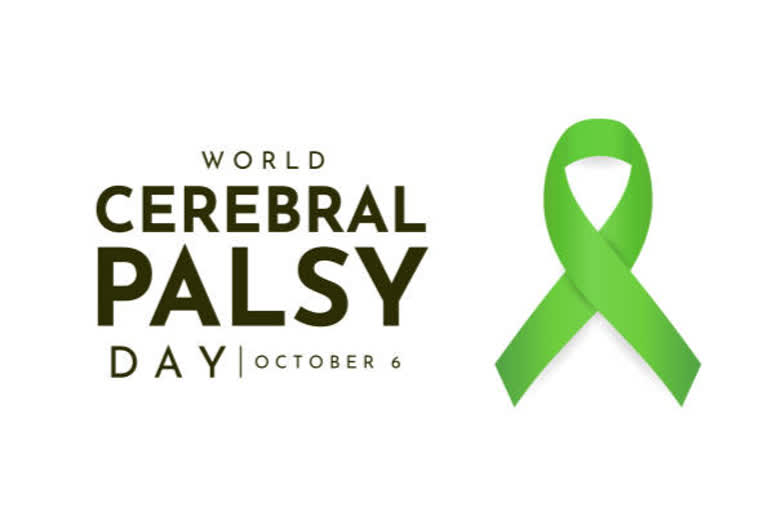Hyderabad: World Cerebral Palsy Day is celebrated worldwide on October 6th every year. The aim of this day is to care for and support people with cerebral palsy, raise awareness about the disease, and create social change to help people with cerebral palsy. In Cerebral Palsy, 'Cerebral' means related to the brain, and 'Palsy', on the other hand, means weakness or trembling of the body.
Cerebral palsy is not a single disease but a group of several neurological disorders that occur in a newborn or infant, and permanently affect the child's muscle movement and posture, leaving the child with lifelong disabilities. Cerebral palsy affects 2 to 4 out of every 1,000 children. This is not a common problem at all. The disease affects about 17 million people worldwide, yet very few people are aware of it. Determining the cause of this disease, its symptoms and how early can you improve outcomes for people with cerebral palsy.
Cerebral Palsy (CP) is a group of neurological conditions caused by brain damage or abnormal brain development during pregnancy, at birth, or shortly after birth. The disease has many different symptoms including vision, speech and learning problems, intellectual disability, epilepsy, and partial or complete loss of voluntary muscle movement. It is a problem with the brain and muscles. Sometimes the eyes and ears are also affected by cerebral palsy.
Cerebral palsy is not contagious, which means that it does not spread from person to person. It is also not a progressive disease as its symptoms do not increase or worsen over time. The symptoms can vary from child to child and are treated according to the severity of their condition. Cerebral palsy in children has many symptoms. The symptoms of cerebral palsy vary from person to person. The symptoms can range from mild to severe:
- Difficulty in walking and sitting.
- Difficulty holding objects.
- Changes in muscle tone.
- Difficulty in speaking.
- Difficulty swallowing.
- Excessive salivation.
- Complete loss of brain balance.
- Intellectual disabilities
Symptoms of cerebral palsy usually appear in children before the age of 3-4 years. If a child has all the above symptoms before this age, parents should definitely consult a doctor. With timely treatment, the child can also recover.
There are many causes of cerebral palsy. Cerebral palsy usually occurs before birth, but can also occur at birth or in the first few years of life. The main cause of cerebral palsy is that the baby in the womb does not get enough oxygen.
Also read: Cerebral palsy might be treatable: Study
More such causes of cerebral palsy include:
- Cerebral palsy can be caused by abnormal brain development or developing brain injury.
- Asphyxia: Lack of oxygen to the brain during newborn or delivery.
- Gene mutations that cause abnormal brain development.
- Severe jaundice in children.
- Maternal infection during delivery.
- Infection of the brain.
- Bleeding in the brain.
- Head injuries caused by falls during pregnancy, accidents, etc.
- Head injuries due to lack of proper blood flow to the brain.
- Injury to the brain
Incidences where children are at high risk of cerebral:
- Premature birth.
- Very low weight during birth.
- Having twin births.
- Breech Birth: Breech birth is the condition in which the baby's hips and legs protrude before delivery.
- Rh incompatibility: Rh incompatibility is a condition when the Rh blood type of the mother is significantly different from the Rh blood type of the baby.
Cerebral palsy is classified on the basis of the area of the brain affected. It is of four types, which are:
- Spasticity cerebral palsy.
- Dyskinetic cerebral palsy.
- Ataxic cerebral palsy.
- Mixed cerebral palsy.
There are no specific tests for CP in general. However, some tests can determine whether a child has cerebral palsy.
- Brain scans: These include MII, Cranial, and Ultrasound.
- EEG: Seizures are also symptoms of cerebral palsy. EEG is often done for children with seizures. It records the child's brain activity.
- Lab tests: The baby's blood and urine are tested.
Experts explain that most of the problems that cause cerebral palsy cannot always be prevented. However, here are the steps you can take to reduce the complications of cerebral palsy during pregnancy:
- Get vaccinated against diseases that can damage the fetal brain.
- Maximum precautions are necessary before labor or delivery.
- Contact your doctor regularly during pregnancy. This can help prevent premature birth, low birth weight, and infections.
Treatment of cerebral palsy means reducing its symptoms and complications. Treatment includes adjuvants, medications, and surgery. Other treatments include speech therapy, physical therapy, occupational therapy, etc. There is no cure for cerebral palsy. But it can be managed effectively. Some children with cerebral palsy do not need special help. But some, on the other hand, may need long-term care. Their care and appropriate treatment can improve the lives of children with cerebral palsy.



